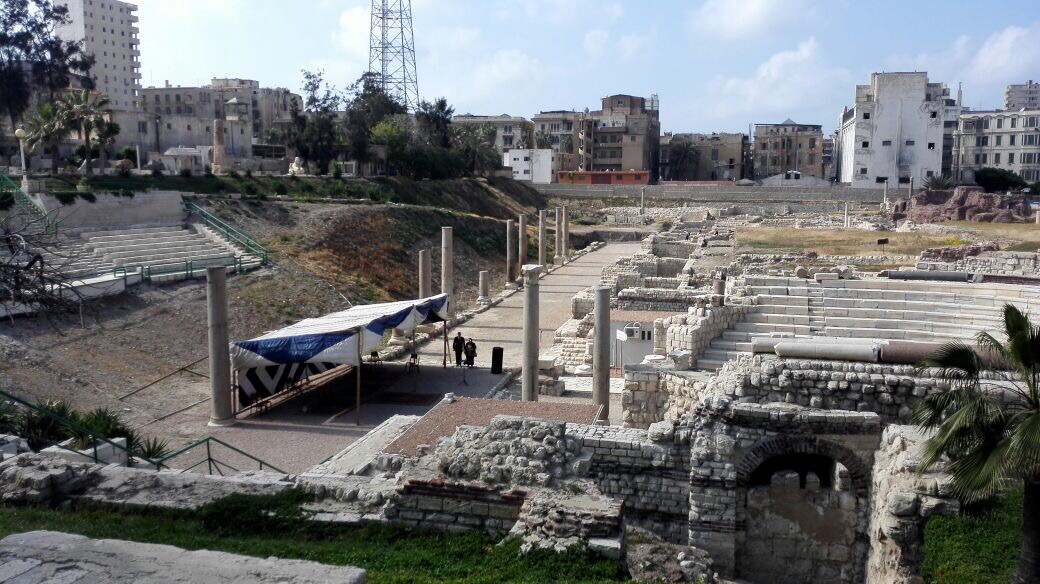Egyptian Minister of Antiquities Khaled El-Enany and members of parliament inaugurated Alexandria’s cistern and imperial bathing complex area in the Kom El-Dikka archaeological site.
Situated in the heart of Alexandria and characterised by its traditional style and distinctive architecture, Kom El-Dikka has a strong and powerful presence of its own.
The area has a vast cultural significance as it has been undergoing excavation and restoration since 1960 by an Egyptian-Polish mission from Warsaw University.
Mahmoud Afifi, head of the ministry’s Ancient Egyptian Antiquities Department, said that the newly inaugurated area to be included within the Kom Al-Dikka tourist path, which includes the Roman amphitheater, the bird villa and residential houses from the Hellenistic period until the Islamic era.
El-Enany said that the bathing complex is “one of the finest edifices of its time,” and that the bathing halls had welcomed hundreds of bathers at a time.
The complex also includes an area for physical exercise, walkways, and facilities such as public latrines. Fresh water was supplied to the complex using huge cisterns and heated by a complex system of heaters and pipes.
During the tour, the minister along other parliamentary delegates visited the planned Mosaic museum in downtown Alexandria to inspect ongoing work and assess any obstacles that may impede its completion.
In further attempts to highlights Alexandria’s tourist attractions and celebrate its significance, Mohamed Abdelmaguid, director-general of the Underwater Archaeological Department, introduced a three-phase plan to develop the Qayet Bey Citadel and its surroundings.
He also reviewed a plan for the construction of the first underwater museum beneath the city’s eastern harbour, which once was the ancient Alexandria royal area, in addition to building an underwater park to promote diving.







Comment (1)
[…] https://egyptianstreets.com/2017/04/02/4th-century-imperial-bathing-complex-exhibited-in-alexandria/ […]